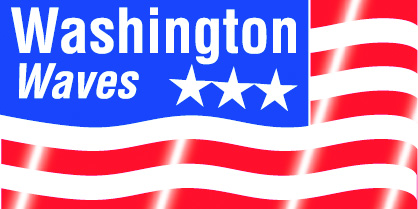Washington, D.C.—The House gave final congressional approval to a major defense authorization bill that includes a $1.35 billion package to boost modernization opportunities for ports, maritime infrastructure and shipbuilding and expand workforce education and training.
Passing the House by a vote of 310 to 118, the National Defense Authorization Act went to President Joe Biden to be signed into law. It previously passed the Senate by 87 to 13.
Sen. Maria Cantwell (D-Wash.), who chairs the Senate Committee on Commerce, Science and Transportation, said she negotiated the inclusion of the U.S. Maritime Administration (MarAd) reauthorization provision as part of the annual legislation.
“This bill invests in modernizing America’s ports and shipyards that play a central role in moving American products around the country and world,” Cantwell said.
“It makes critical investments in growing our maritime workforce by doubling educational stipends for State Maritime Academy students and expanding career opportunities for advancement into high-wage maritime jobs.”
She singled out provisions authorizing $500 million for the Port Infrastructure Development Program, a 135.63 percent increase from FY23; $318 million for the Maritime Security Program; $198.5 million for the U.S. Merchant Marine Academy, a 50.76 percent increase; $66.58 million for the State Maritime Academies, a 45.69 percent increase; $43.02 million for the Federal Ship Financing Program (Title XI), a 1.334 percent increase; $30 million for the Small Shipyard Grant Program, a 50 percent increase; and $15 million for the Maritime Environmental and Technical Assistance Program, a 150 percent increase.
Title XI Changes
The Maritime Administration (MarAd) published a final rule informing interested parties and the public that it is amending its regulations implementing the Federal Ship Financing Program’s (Title XI Program) financial requirements.
Effective January 16, MarAd said, the action is necessary to implement statutory changes and update the existing financial requirements imposed on Title XI Program obligors to align with more up-to-date vessel financing and federal credit best practices.
For additional information, contact David Gilmore at 202-366-5737, marinefinancing@dot.gov or the Department of Transportation, Maritime Administration, Office of Marine Financing, 1200 New Jersey Ave. SE, Washington, DC 20590.
Seaway Investments
A survey released by the Great Lakes St. Lawrence Seaway Development Corporation (GLS) “conservatively estimates” that $8.4 billion has been or is committed to be spent on infrastructure investments between 2018 and 2027 to enhance marine shipping on the Great Lakes/Seaway.
“The survey’s conclusion is clear: both the public and private sector recognize that maritime commerce on the Great Lakes and St. Lawrence Seaway remain essential to the economies of the United States and Canada, and are investing to protect this irreplaceable system,” said U.S. Transportation Secretary Pete Buttigieg.
GLS stated the investments sustain 241,286 U.S. and Canadian jobs and help contribute to the safe, efficient and sustainable movement of the 135.7 million metric tons of cargo that moves along the Great Lakes St. Lawrence Seaway.
Prepared by Martin Associates of Lancaster, Pa., and titled “Infrastructure Investment Survey of the Great Lakes and St. Lawrence Seaway System,” GLS stated, the survey quantifies recent and ongoing investments in the navigation system and builds confidence in the Great Lakes Seaway System’s future viability.




